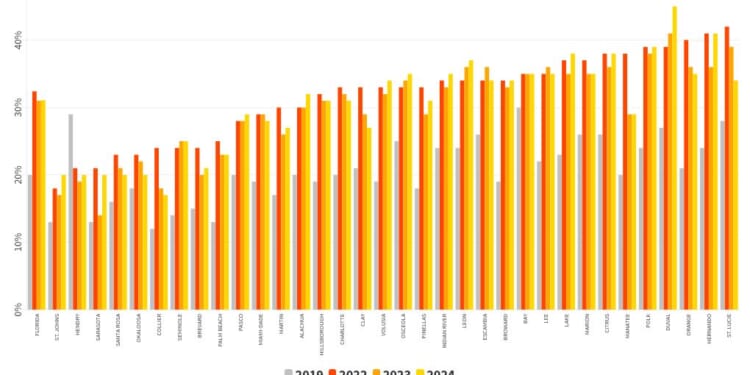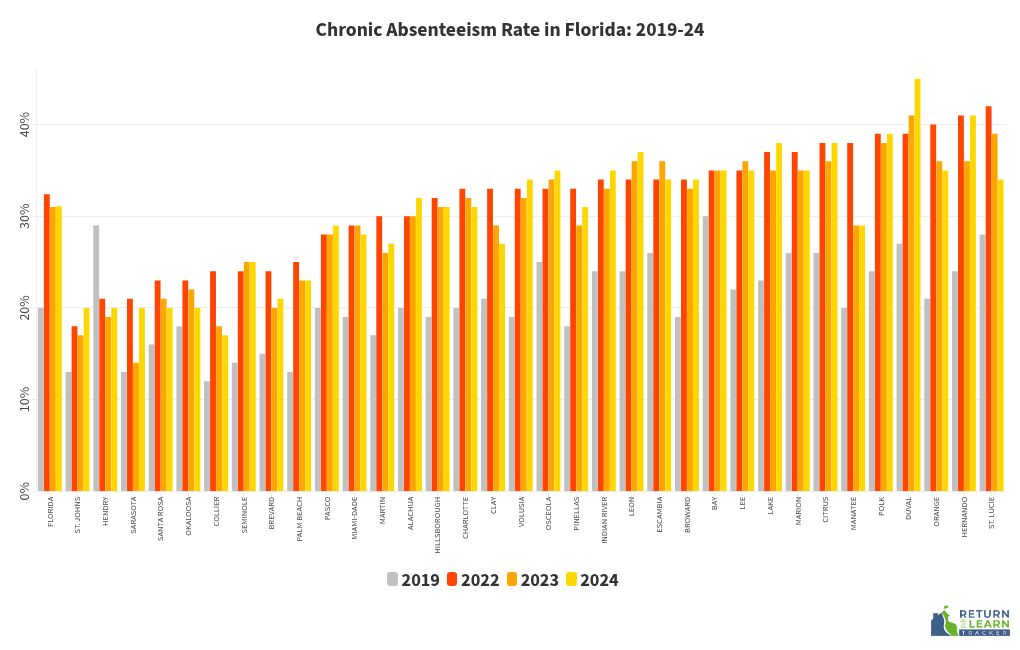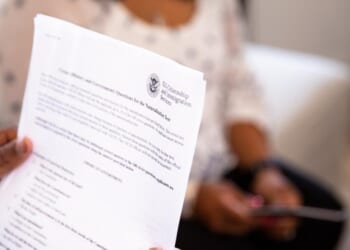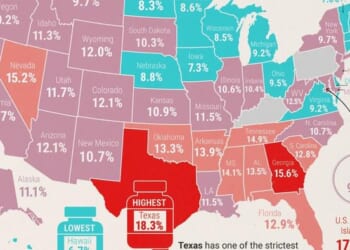Banning smartphones has become one of America’s favorite school policies. In 2023, Florida became the first state to prohibit cell phones and similar devices, and since then about 25 other states have passed limits or bans of varying stringency. Several more states—and many districts—have enacted policies that fall short of bans, but aim to discourage phone access during the school day.
Bans are popular because people understand that phones distract students and undermine their productivity. Americans don’t need a study to tell them this: They, like me, know it because their own phones distract them and undermine their own productivity. Nonetheless, we will need studies to see whether and to what extent cellphone bans, however popular, actually reduce student distraction and improve outcomes.
This month, David Figlio and Umut Özek offered such a study, examining the effects of Florida’s statewide cellphone ban on students in a large unnamed Florida district. The authors set out to test whether bans genuinely change student behavior and outcomes, or merely make adults feel better. They analyzed data from one of the nation’s largest districts over two full school years, looking at the causal effects of the ban on student discipline, test scores, and attendance.
Of course, a ban only works it if actually works to ban phones. To confirm that the ban reduced phone use in schools, and thus could conceivably drive changes in student outcomes, the authors used smartphone location data from Advan. These data showed that cellphone activity in schools dropped sharply after the ban took effect. Notably, the same data show no change in cellphone activity in other nearby places, meaning the Advan data are finding signal instead of noise.
So what did Figlio and Özek find? For middle and high school students, suspensions spiked in the short term as schools began enforcing the new rules, with the largest increases among Black and male students. Those spikes were primarily for in-school suspensions, the kind of consequence I think is more apt to rise from disputes over confiscated phones. Within a year or so, however, the suspension rate settled back down, suggesting schools and students adapted to the new normal. Meanwhile, elementary school students, who have lower phone use than their older counterparts, did not see suspensions increase in either year of the ban.
Absences tell a more encouraging story. Unexcused absences fell noticeably after the ban, primarily in middle and high schools, while excused absences showed little change. That’s good news in a state that, like the rest of the country, saw absenteeism surge after the pandemic. Indeed, although the district in the study is not named, it’s one of those in the chart below, nearly all of which have chronic absenteeism rates that remain far above pre-pandemic levels. At these rates, any policy that nudges attendance upward is worth noting, even if the link between cellphone bans and attendance isn’t entirely clear.
On academic outcomes, the gains were clear. By its second year, the ban had improved test scores—measured three times a year under Florida’s FAST system—by 1.1 percentile points on average, with stronger effects for boys and older students. Importantly, since the authors calculate the causal effects of the ban by comparing schools with high cellphone use before the ban to those with lower cellphone use before the ban (even though the ban might have helped all schools), this should be treated as a conservative estimate. To wit, although the authors only attribute a 1.1 percentile point increase to the cellphone ban, test scores in the second year of the ban were 2–3 percentile points higher than they were before the ban, suggesting the cellphone ban may have had a large impact than the authors’ methods capture.
Interestingly, Figlio and Özek find that roughly half of test score gains came from improvements to attendance that were produced by the ban, underscoring the fact that better attendance helps students learn more. That finding fits nicely with recent work from AEI’s Chronic Absenteeism Research Working Group showing that attendance still matters for student achievement.
This study is a first cut at understanding how cellphone bans play out in real schools, not the final word. The effects of cellphone bans will surely depend on how bans are designed, enforced, and implemented. Nonetheless, this early evidence suggests that cellphone bans can be more than just popular: They may be policies students can learn to live with, learn to attend with, and, ultimately, learn better with.
The post Do School Cell Phone Bans Actually Make a Difference? appeared first on American Enterprise Institute – AEI.












